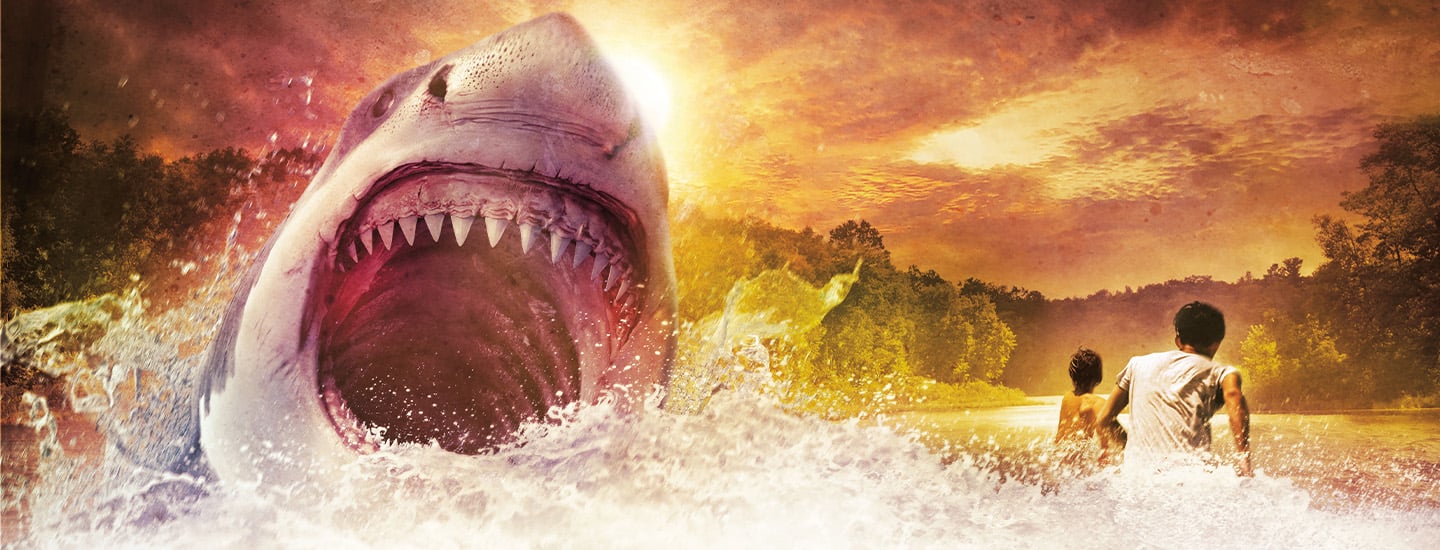Jim McMahon/Mapman®
Terror at the Jersey Shore
In July 1916, there was a series of shark attacks along the New Jersey coast. Three men and one boy died.
It was July 12, 1916. Twelve-year-old
Joseph Dunn was running toward Matawan Creek. Behind him were his 14-year-old brother, Michael, and their buddy Jerry. When they reached the dock, Joe jumped into the cool water.
Splash!
What could be better than this?
Joe and Michael lived in New York City, but they often came to Cliffwood, New Jersey. Their aunt lived there. The tiny town wasn’t a fancy place. But to Joe and Michael, Cliffwood was heaven. It was a fun escape from the hot summer in the city. In Cliffwood, they could cool off in the muddy creek.
But that day, their happy swim ended suddenly.
A man appeared on the dock. He was sweaty and out of breath. “There’s a shark in the creek!” he yelled.
A shark? In the creek?
Frantically, Joe swam toward the dock. He felt something grab his leg. It was like a giant pair of scissors.
Crunch.
The water around him turned bright red.
Joseph Dunn had just become a victim in a famous series of shark attacks. By the time the attacks were over, three men and one boy had died.
Joe didn’t know what was happening to him. He had only one thought: He was about to die.
It was July 12, 1916. Joseph Dunn, 12, ran toward Matawan Creek. Behind him were his 14-year-old brother, Michael, and their friend Jerry. When they reached the dock, Joe jumped into the water.
Splash!
What could be better than this?
Joe and Michael lived in New York City, but they often came to Cliffwood, New Jersey. Their aunt lived there. The boys loved the town. Summer in the city was hot. In Cliffwood, they could cool off in the creek.
But that day, their swim was cut short.
A man appeared on the dock. He was sweaty and out of breath. “There’s a shark in the creek!” he yelled.
A shark? In the creek?
Frantically, Joe swam toward the dock. He felt something grab his leg. It was like a huge pair of scissors.
Crunch.
The water turned red.
Joe had just become a victim in a famous series of shark attacks. The attacks killed three men and one boy.
Joe didn’t know what was happening. He had just one thought: He was about to die.
It was July 12, 1916, and 12-year-old Joseph Dunn was running toward Matawan Creek. Behind him were his 14-year-old brother, Michael, and their buddy Jerry. When they reached the dock, Joe jumped into the cool water.
Splash!
What could be better than this?
Joe and Michael lived in New York City, but they often visited their aunt in Cliffwood, New Jersey. Although the tiny town wasn’t a fancy place, it was heaven as far as Joe and Michael were concerned. It was a wonderful escape from the hot summer in the city. In Cliffwood, they could always cool off in the muddy creek.
But that day, their refreshing swim ended suddenly.
A man appeared on the dock, sweaty and out of breath. “There’s a shark in the creek!” he shouted.
A shark? In the creek?
As Joe swam frantically toward the dock, he felt something clamp onto his leg. It was like an enormous pair of scissors.
Crunch.
The water around him turned bright red.
Joseph Dunn had just become a victim in a famous series of shark attacks that would leave three men and one boy dead.
Joe didn’t know what was happening to him, but he felt certain he was about to die.

